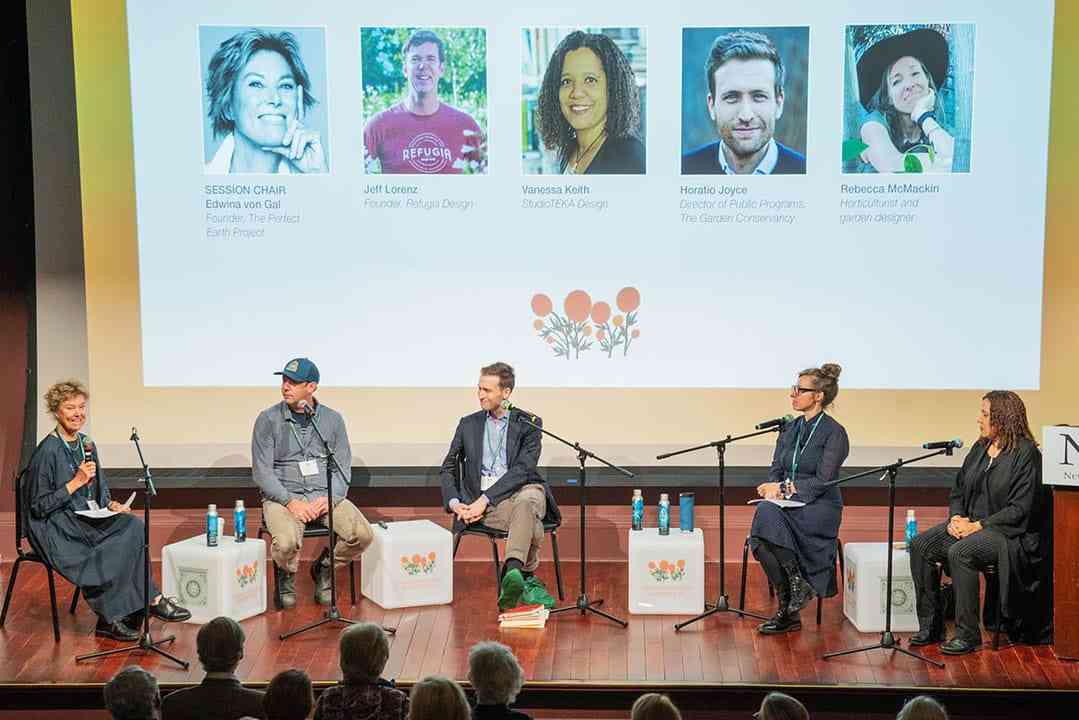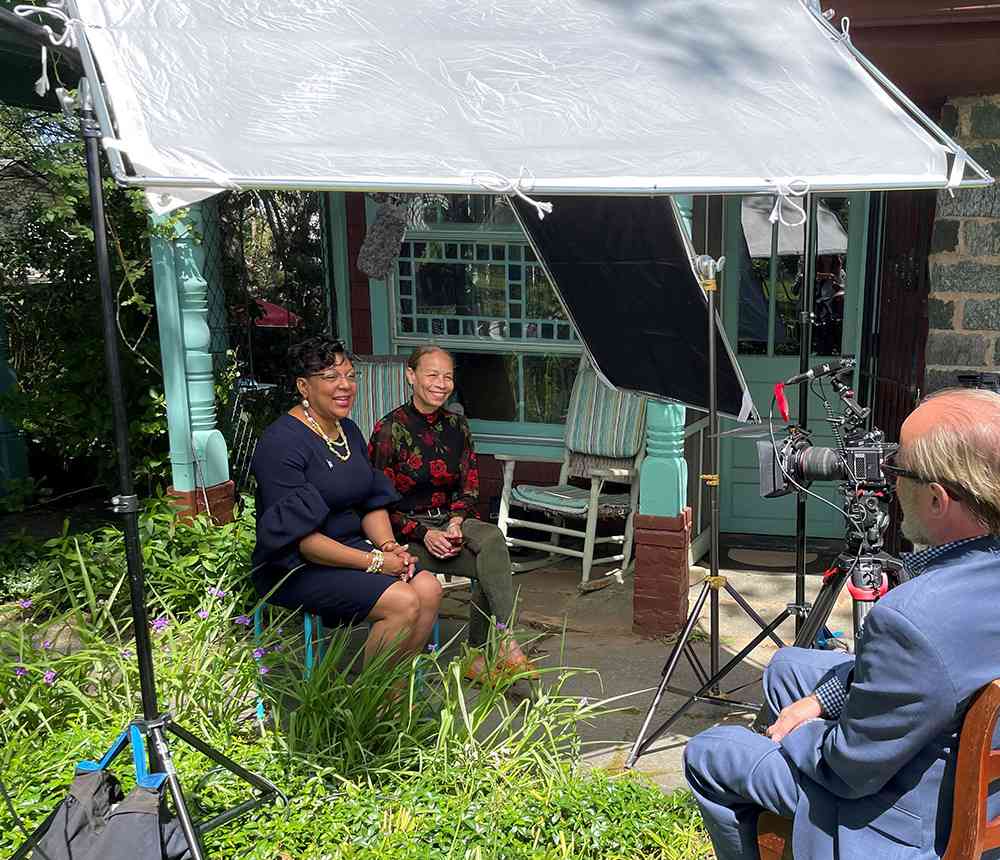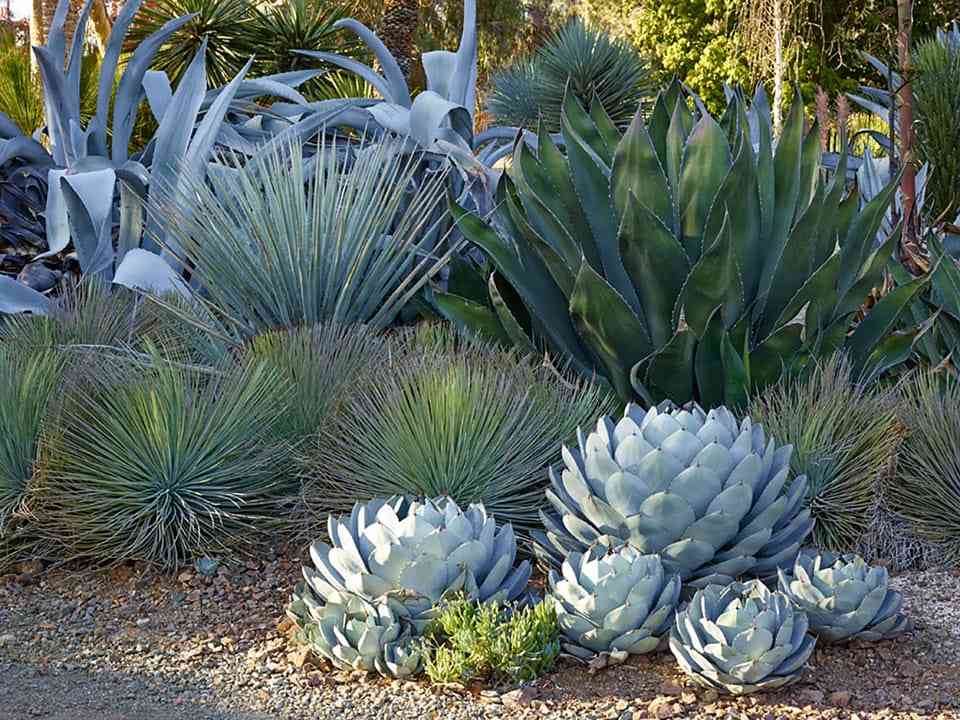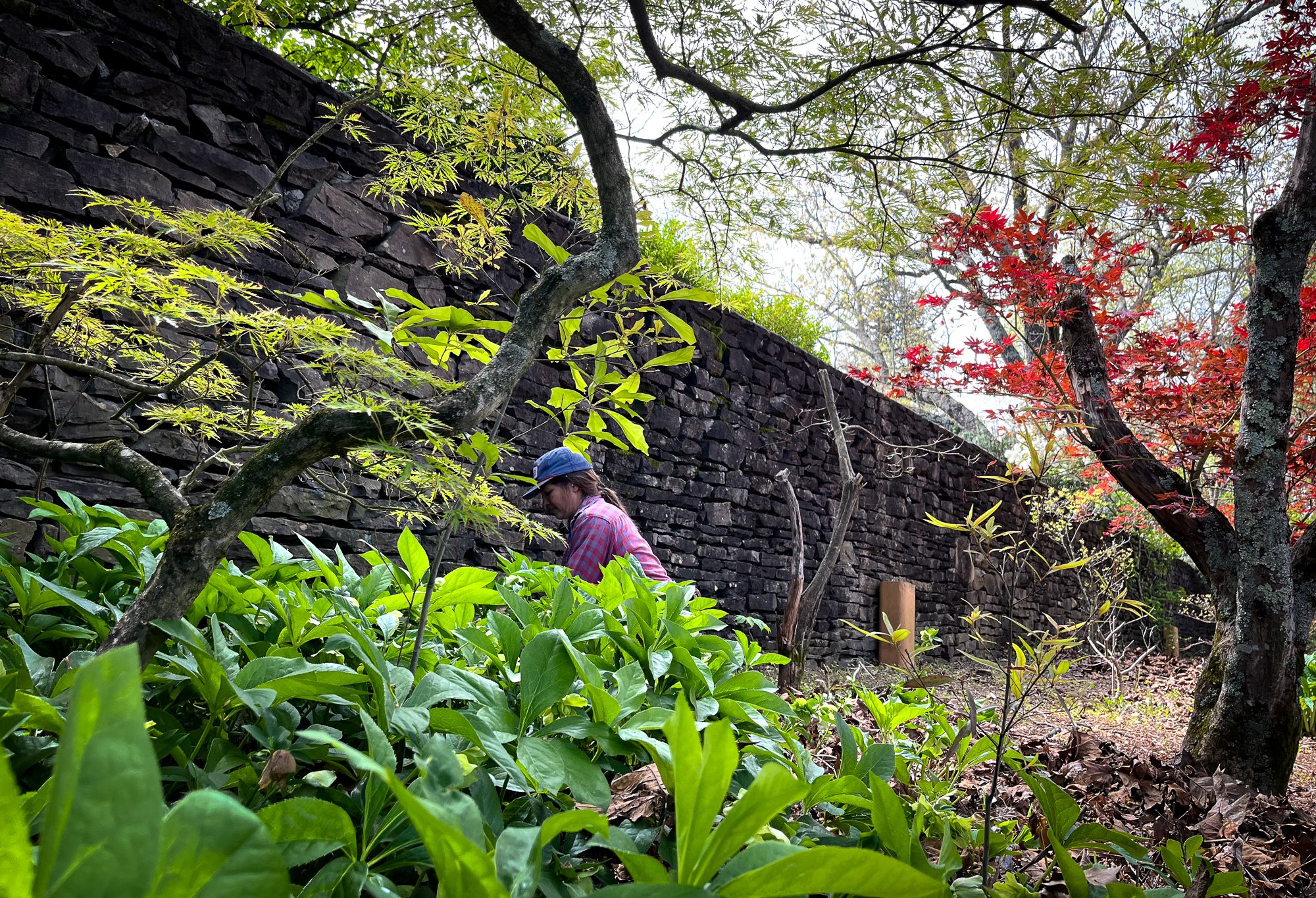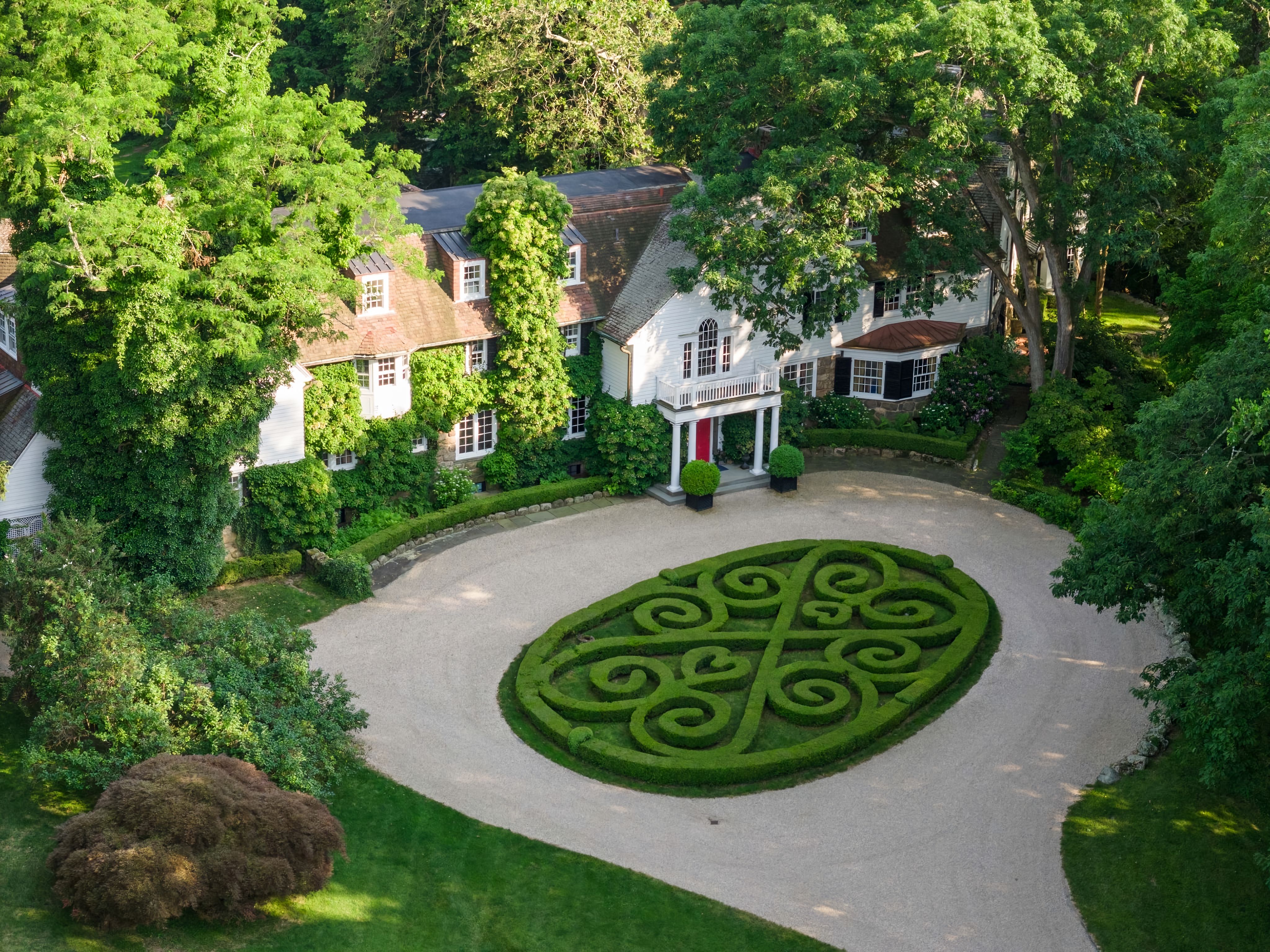Masses of honeysuckle kept this St. Louis garden hidden from view. After two astonishing discoveries, the veil is lifted on Russell Page’s design.
When Lisa and Steve Trulaske moved into their home in St. Louis, the garden was an overgrown mess. There was little hint about how the landscape should look, or how to begin restoring it.
“It was just a mud pile with a ton of honeysuckle,” Lisa recalls.
Fortunately, the house, long vacant, still held the secret.
Their architect, Mark Critchfield, made his way into the basement one day in 2012 and found a room-sized safe. In the safe was a box, and inside was a sheet of paper with the garden’s original design. It was signed by one of the world’s most revered and accomplished garden designers of the 20th century, Russell Page.
Using the drawing like a treasure map, Lisa, Steve, and Critchfield began to explore the structure that was lying beneath the overgrowth. To their astonishment, they discovered a reflecting pool, enclosed by three walls, and an arched doorway leading in. The discovery set them on an exciting path toward restoring an elegant work of art.
Page, born in England in 1906, studied art in Paris and distinguished himself with a remodeling of Longleat, in Wiltshire, England, a treasure of landscape design dating to the 1500s and transformed by the famous Lancelot “Capability” Brown in the 1700s. Page grew in acclaim for his combination of artistry and horticulture as he went on to design gardens throughout Europe, the Middle East and North and South America. Inspired by European and Islamic gardening traditions, he produced a great diversity of designs for parks and gardens over the course of his career.
In the United States, his legacy includes the newly restored 70th Street Garden at The Frick Collection in New York City and the Donald M. Kendall Sculpture Gardens at PepsiCo in Purchase, NY.
His legacy also endures in private residences like the Trulaske home in St. Louis.
A Hidden Hardscape
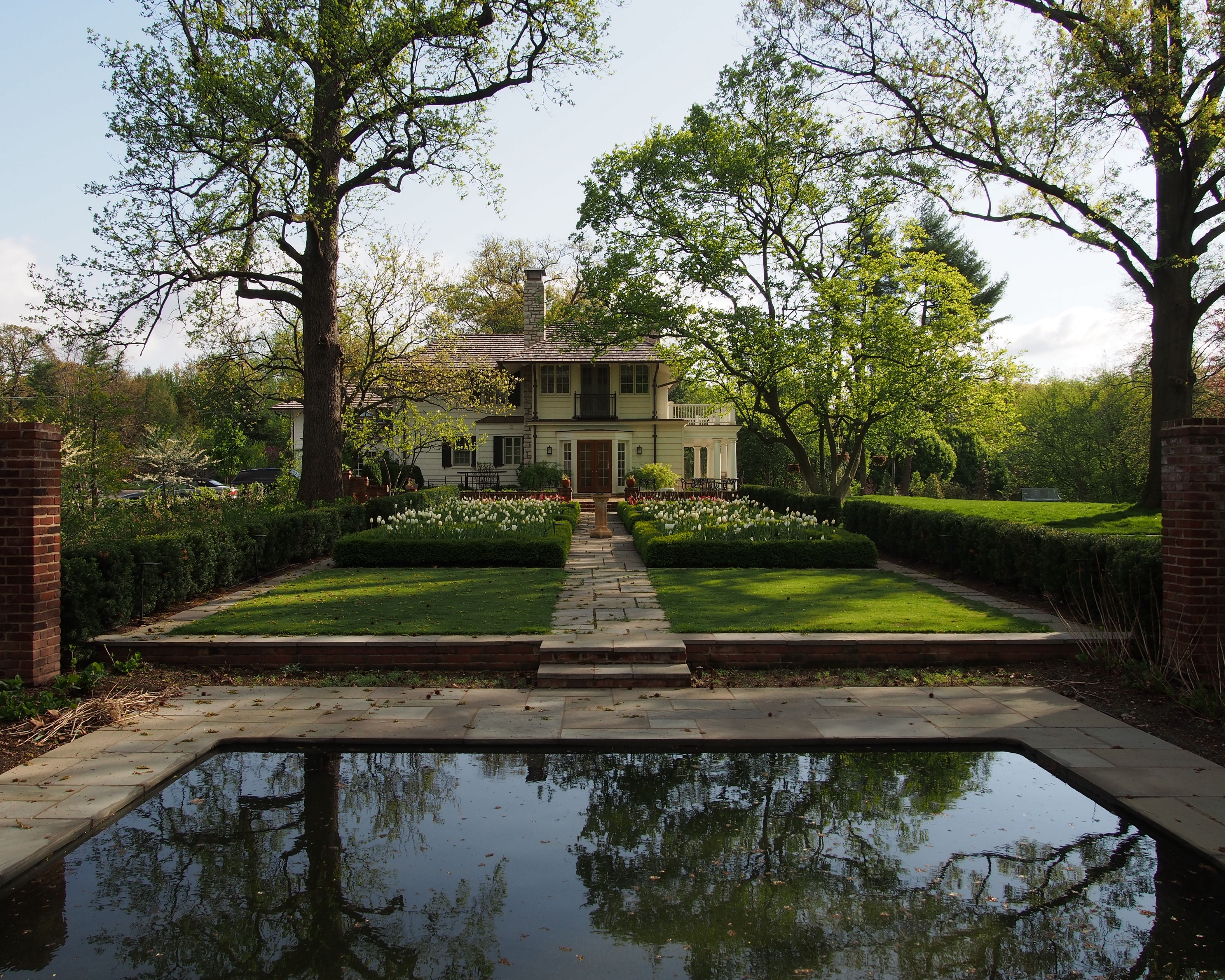
Excited and inspired, Lisa reached out to her good friend Mary Morgan. Deeply knowledgeable about gardening, Morgan taught Lisa about the importance of the discovery, and stepped in to lead the charge on the restoration. None of it would have happened, Lisa says, without Morgan’s expertise and willingness to teach her about Page and the magic of gardens.
Lisa began reading everything she could about Page’s legacy. She learned about his life and his personal style, right down to his signature white Gucci shoes.
As they started restoring the garden, the Trulaskes followed one guiding thought: “What would Russell do?”
By 2014, they had restored the garden exactly as the Russell Page plan indicated.
A New Discovery
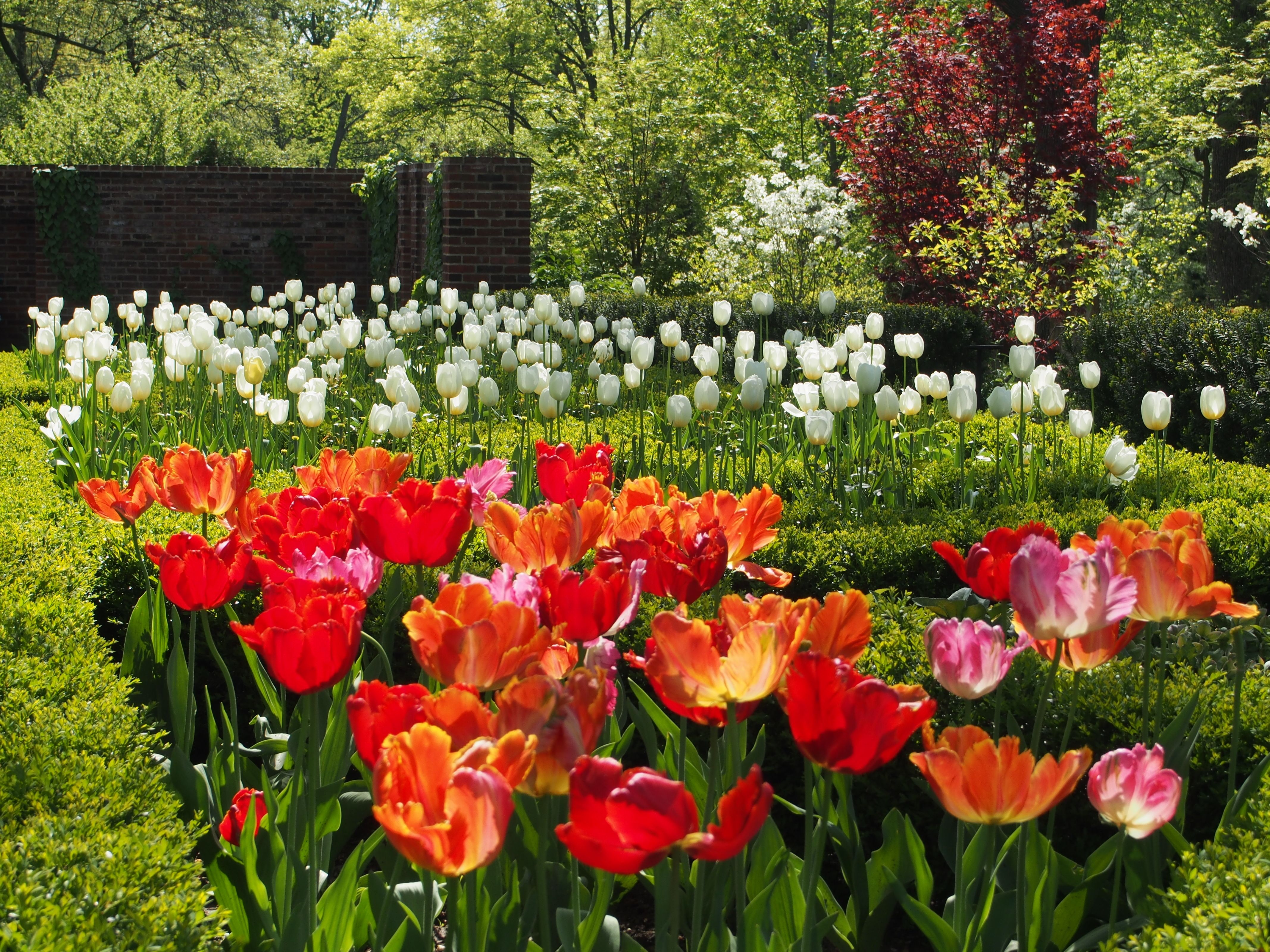
Lisa continued learning and exploring garden preservation as a member of the Garden Conservancy Society of Fellows and the Board of Directors, which she joined this year.
In May, she took part in the Society of Fellows tour in London, visiting the Chelsea Flower Show and touring Munstead Wood, Gertrude Jekyll’s historic home in Surrey, among other attractions. Toward the end of the activity-filled tour came a visit to the Garden Museum.
An oasis of green space in busy Lambeth, South London, the museum celebrates the art, design and history of gardens and gardening through a lively program of events and exhibitions. The museum’s Archive of Garden Design provides access to the working records of leading British garden designers of the 20th and 21st centuries. Its Russell Page collection includes plans and drawings from around the world.
Lisa initially hesitated to go. Because of a mishap that had occurred with her own Russell Page document, she was troubled by a sense of embarrassment at visiting such a venerated archive. The original drawing had gone missing, and she had only copies.
Fortunately, she pressed ahead. The group enjoyed an exhibition, Cecil Beaton’s Garden Party, and received a warm welcome from Museum Director Christopher Woodward, Deputy Director Sarah Hardy, Archivist Rob Hillman, and other staff. As the team began spreading out papers, Lisa looked down and froze.
“My heart just stops,” she recalls of the moment. “I get chills. I’m looking at the design of my house, and all the gardens Russell designed. I’m looking at 15 huge designs of my property.”
This was Page’s detailed vision for the garden. He had listed the plants to be used. He had identified the trees across the street. Lisa was stunned. The staff was surprised, too—and delighted by Lisa’s reaction.
In advance of the visit, Hillman had searched the Russell Page collection for “St. Louis,” aware that Lisa owned a garden designed by Page. The search returned three files; one for Missouri Botanical Garden, and two for private clients. It seemed a long shot, but Hillman retrieved the plans anyway.
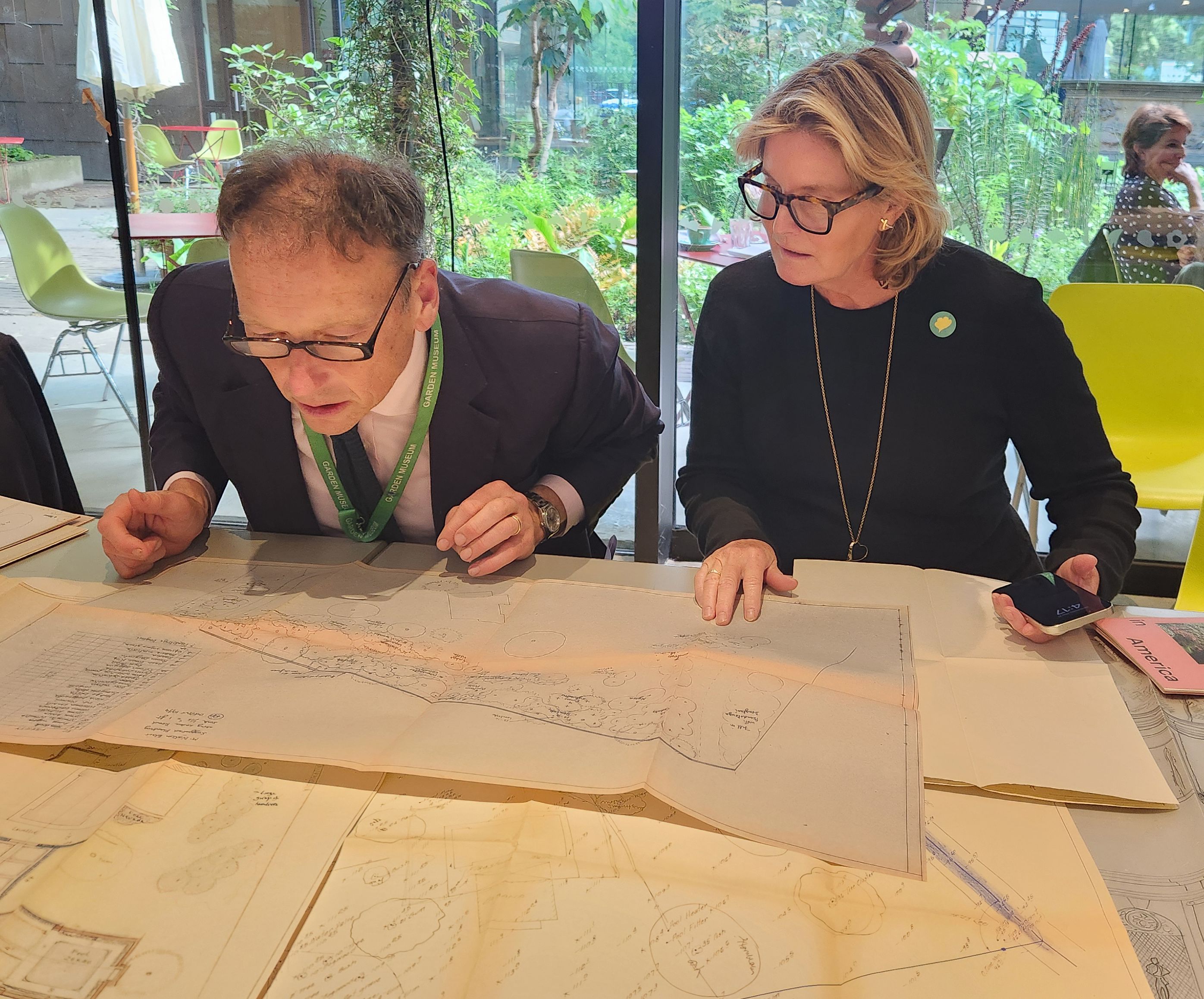
Lo and behold, it was “a magical moment,” he recalls, “as Lisa recognized the final file as her own garden, and even more magically spotted similarities between Page’s original designs and her own work on the site since. Page talked sometimes about the aspect of inevitability that a good garden design would have—well, there it is!”
For the Garden Museum, the moment underscored the importance of its Archive of Garden Design, opened in 2019. “The archive was set up to reflect that gardens vanish or change with their owners over time,” says Sarah Hardy, the museum’s Deputy Director. “We aspire to preserve for future generations the gardens that inspire us today.”
For Lisa, it’s a second fortunate discovery. The plant lists will be used for the quadrants of the Russell Page garden and for surrounding areas of the garden.
“Now I know. I know ‘what Russell would do,’” Lisa says.
Stewarding, and Sharing, a Garden
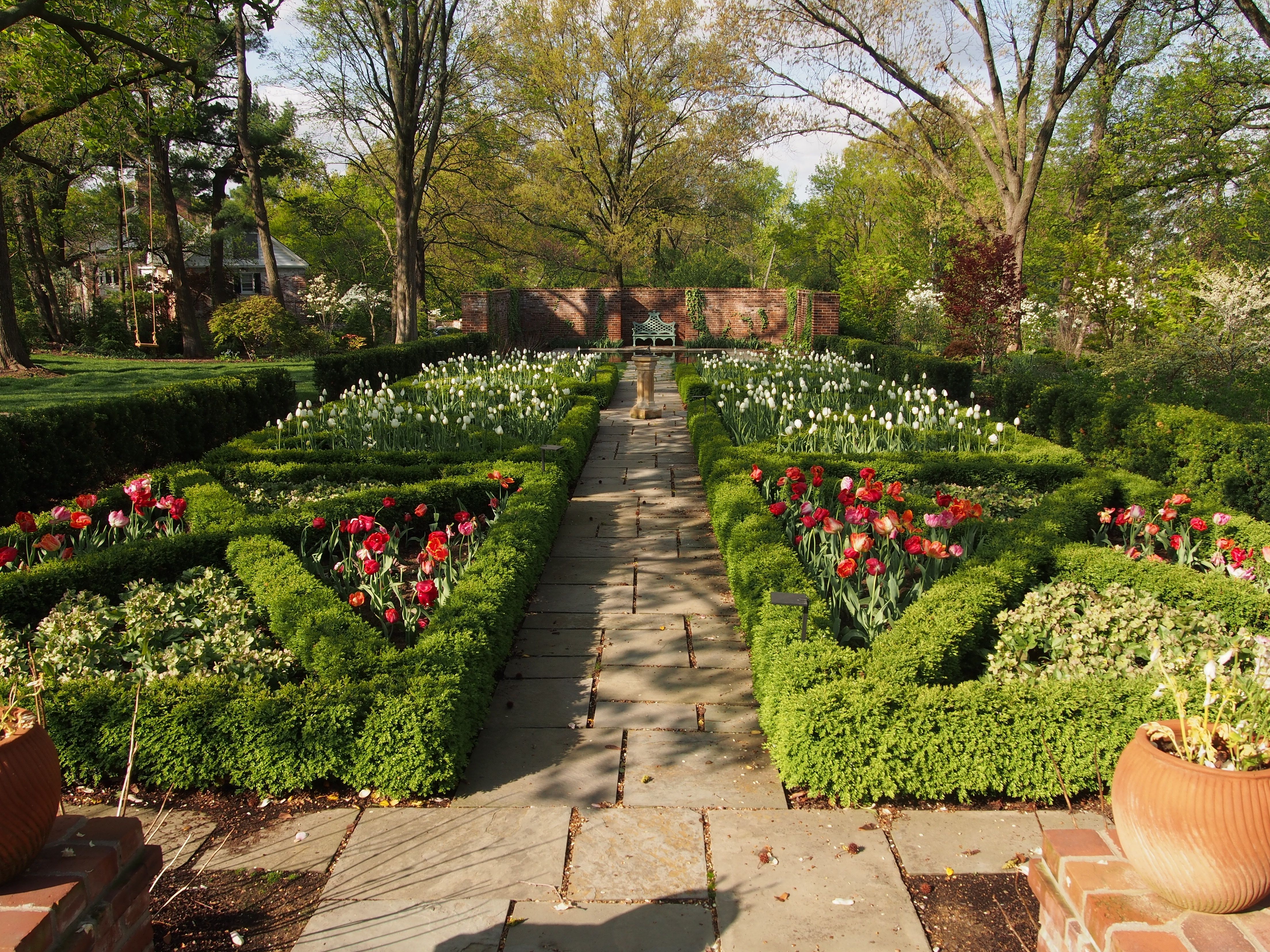
Day to day, Lisa is appreciating how her garden adapts to changes through the seasons and shifts in weather. “The world is crazy but look at what nature does. It’s adapting,” she observes. A green and white palette predominates, and the garden is especially magical during tulip season. Meanwhile, the Trulaskes are working with the Chicago-based landscape architect Douglas Hoerr on the expansion and redesign of the outer gardens.
Lisa and Steve share a sense that as stewards of a Russell Page garden, it’s their duty to bring back this natural work of art. They take the responsibility seriously and happily.
“The story doesn’t seem to end,” Lisa adds. “This garden changed our lives—and will continue to do so.”
Lisa has shared the garden with the Garden Club of America, the Garden Club of St. Louis, and the Garden Conservancy, and has found joy in seeing people embrace the garden and ask questions. The Garden Club of St. Louis is documenting the garden for submission to the Smithsonian’s Archive of American Gardens.
“Gardens are natural works of art,” she says. “They need attention and creativity. They do require work, but that work is not done alone. It’s teamwork and community effort that makes our garden thrive.”


